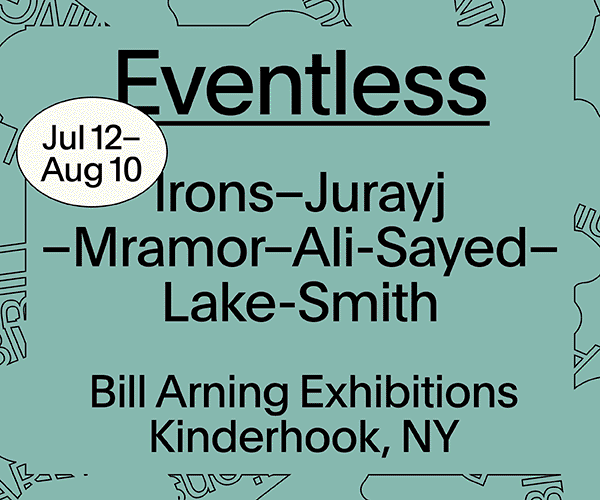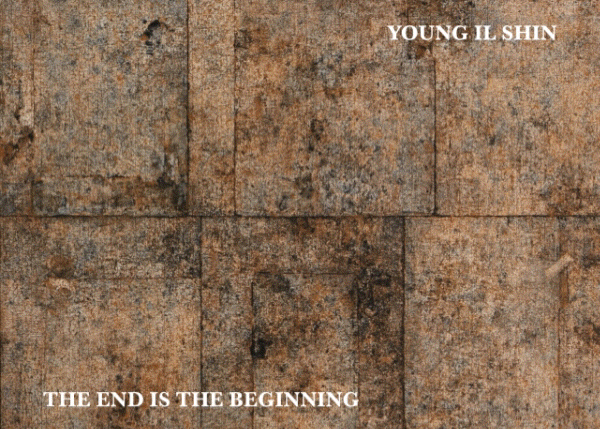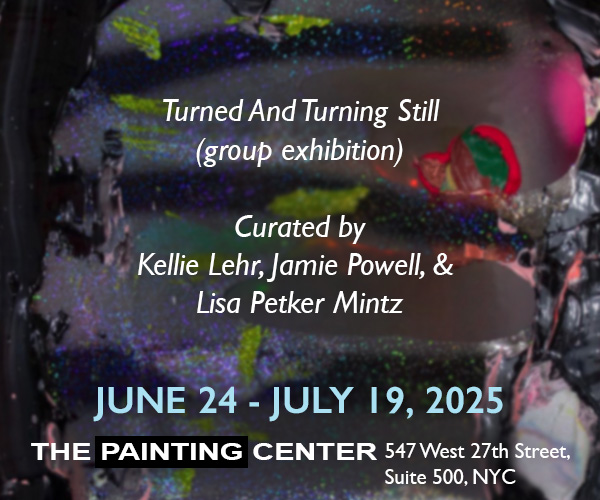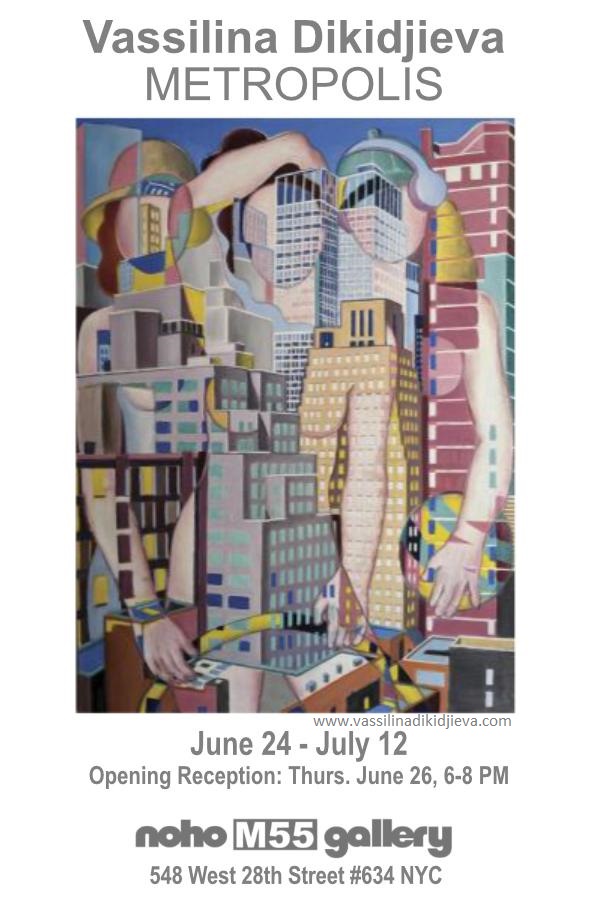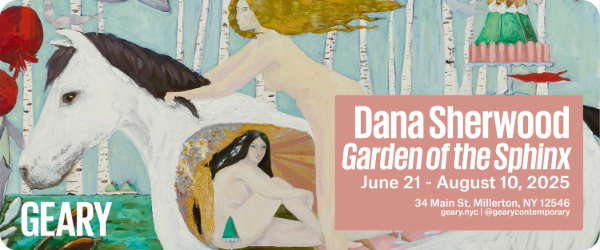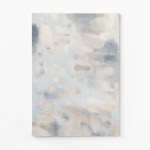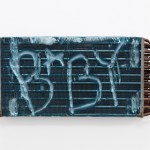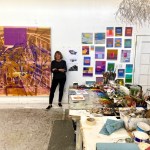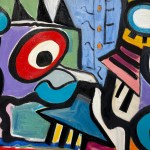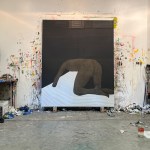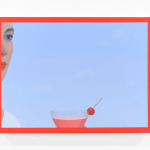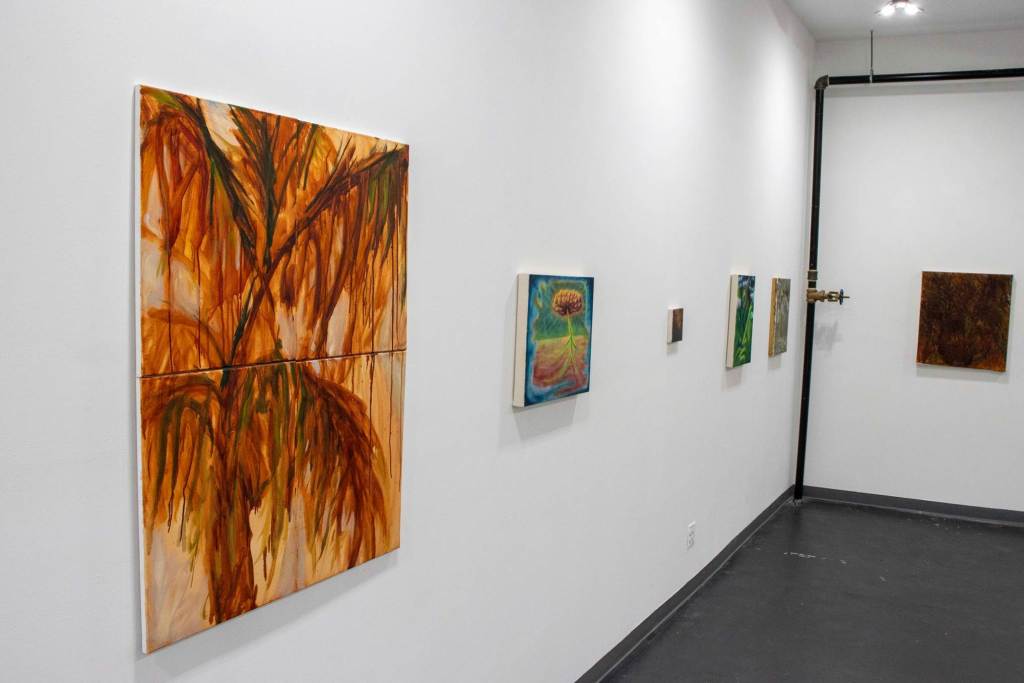
Contributed by Will Kaplan / Curatorial collective Immaterial Projects calls its group show at The Active Space in Bushwick “The Beginning of the End.” It might seem a bit late for the beginning. We can trace the sense of perpetual crisis as far back as we like: Trump’s first term, Citizens United, the Reagan years, and farther still. But by keeping the show’s formal scope to semi-traditional paintings, Immaterial Projects captures elements of past and present alike that still smack us in the face. The show’s colors span cement and sepia, hanging along the gallery’s opposing corners to illustrate decay in both urban and natural landscapes.
Take the irregular canvases of Greg Dzurita, two of which flank the gallery entrance. Their precise curvatures and industrial palette – like rust or concrete – evoke all the promise and austerity of Modernism. They are both soft and severe. The black circles appearing in But No One Left and In Oscillation read as either ominous voids or, to me, surveying lenses. With its seductive tilt towards order, does this ambient architecture constrict our natural impulses, our inherent freedoms?
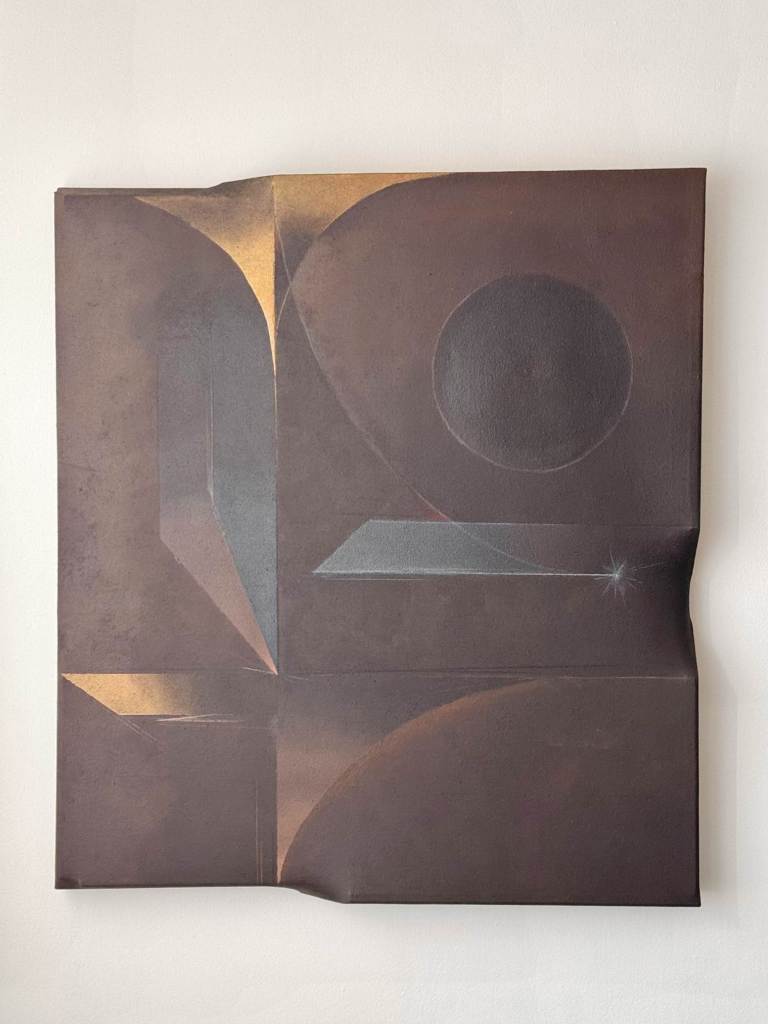
In two neighboring paintings, Wendi Men leavens Dzurita’s rigidity with fierce gestures in acrylic and oil paint. Tensions vibrate between dark swaths and neon smears. Graffiti-like marks lash out at drab backgrounds. These works establish a dialogue with Bushwick itself, where tags and fill-ins either brighten or blight the neighborhood.
On the opposite wall, an orange haze pervades several canvases, immediately suggesting the new norm of forest fires and their long-range pollutants. This wall begins with a before-and-after diptych from Tracie Lee. On the left is Many Paths, a lush, bioluminescent forest and a moment of beauty. It sets the stage for its sobering counterpart to the right, Respiration and Collapse, which depicts a blazing landscape.
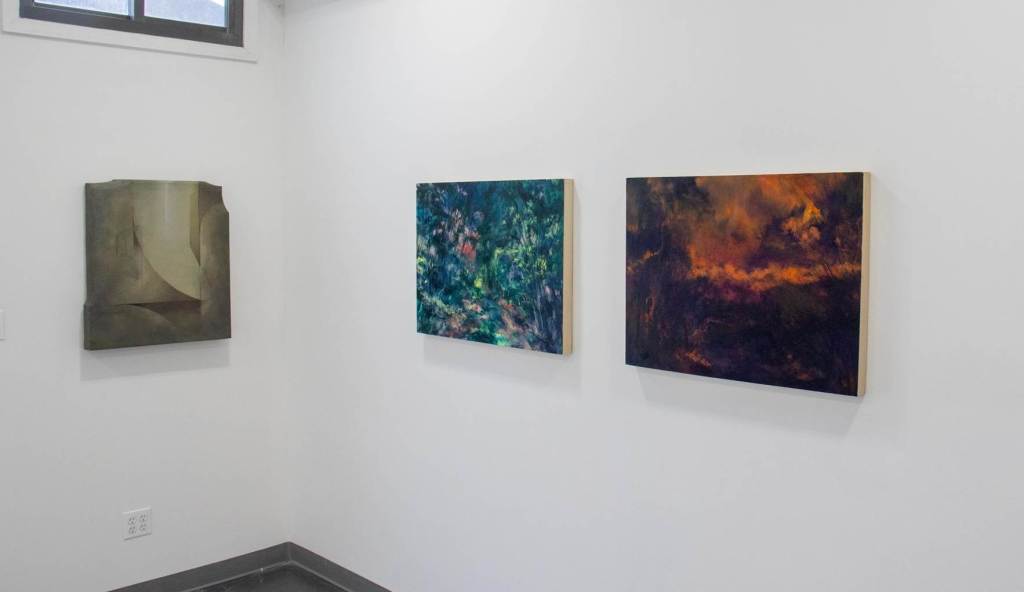
In Fronds I, which embodies a similar interplay of time and color, Natalie Ortiz lays just a few strokes of green over the burnt sienna underpainting of a palm tree. The preparatory image – painted in thin, dripping washes – appears like a frond bleeding under an ashen sun. Left raw, the work trembles with potential energy: the ghost of the vibrant arbor this palm could have become. It’s as if its painter had to flee the easel, lest the flames get her too.
Using that same orange, Jebediah Long’s zany paintings inject some gallows humor. In eye-popping explosions of paint such as Bang of Ordinary Size and The Powers That Be, Long depicts cinematic events of destruction. But he does so cartoonishly, maintaining a Vonnegut-esque sigh at the childish denialism that leads to ruin and the idiocy of merely waiting for mass-casualty panic.
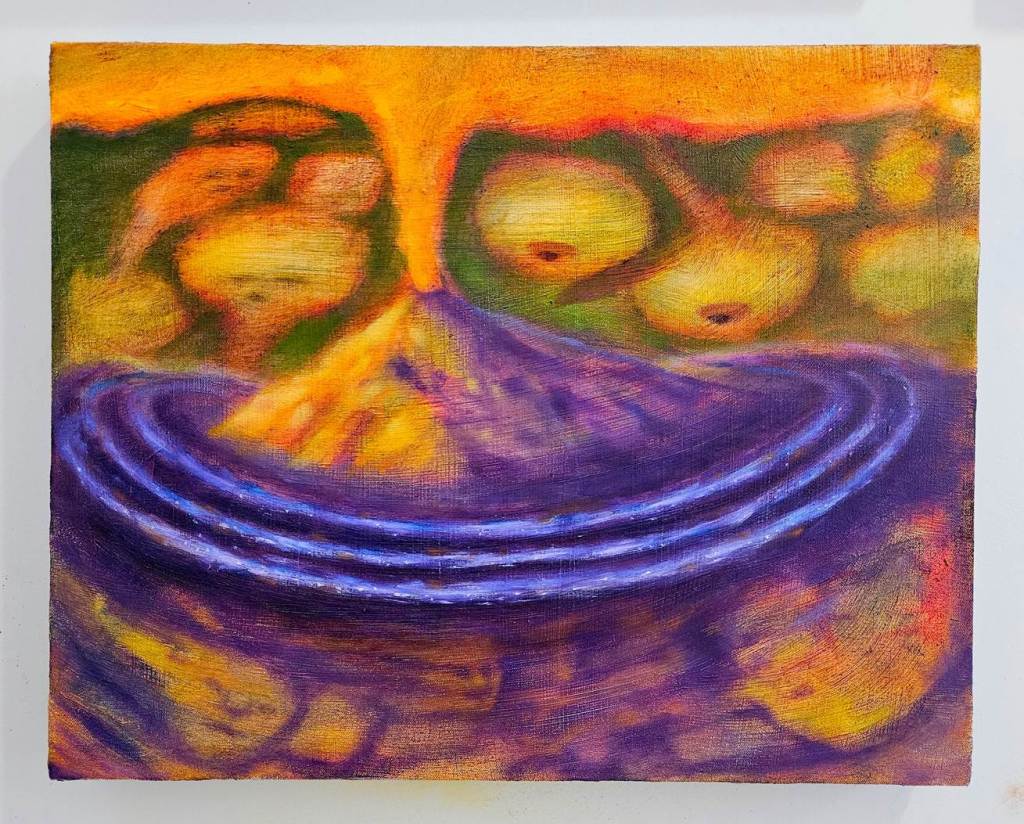
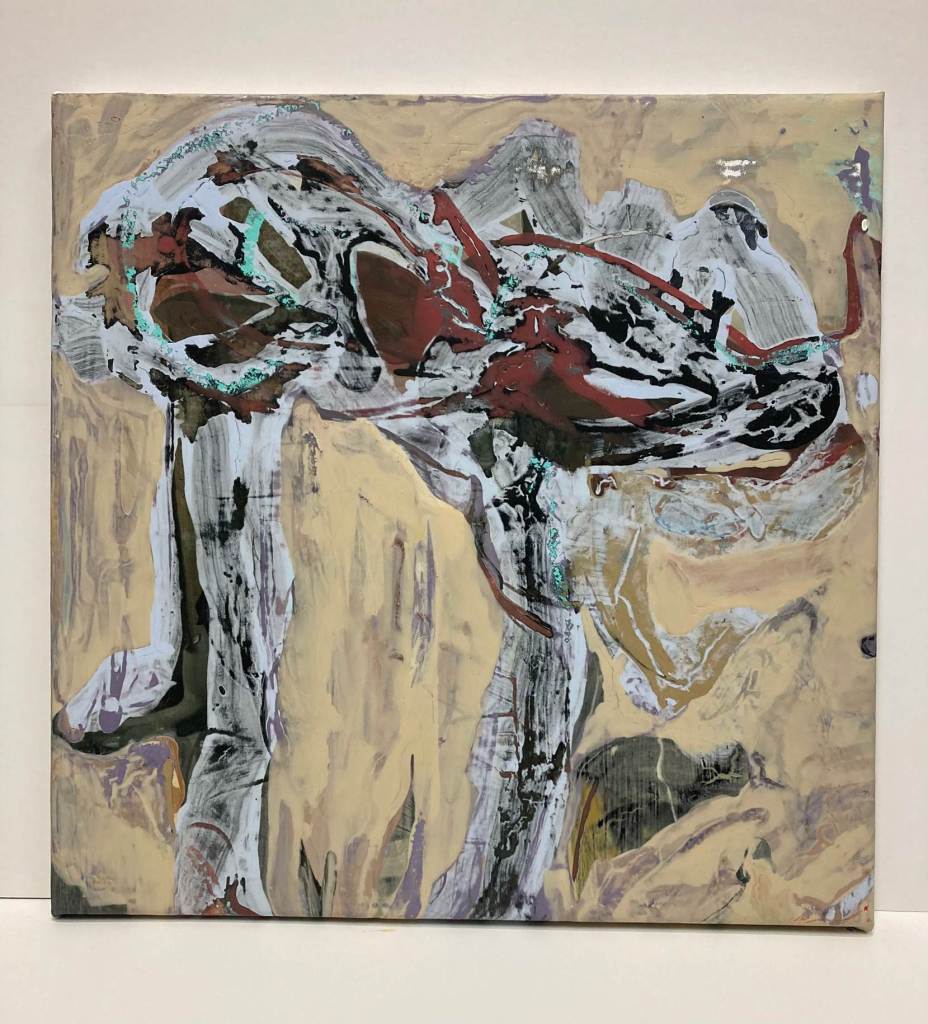
John Fleming’s superb painting – tellingly titled Beetle With The Posture of a Conqueror – provides grounding and identification. In his abstracted view of a quadruped seen from above, a light gray-blue twists over black masses and glistening crimson to render something like the insect’s abdomen. This critter is the show’s strongest figure, its clearest protagonist – perfectly attuned to the end-times theme – and our grim stand-in. From an eerie remove, we see an animal of unnatural coloring distorted, dismembered, and dissolving into its surroundings.
“The Beginning of the End,” Immaterial Projects, The Active Space, 566 Johnson Avenue, Brooklyn, NY. Through May 31, 2025.
About the author: Will Kaplan is a Queens-based artist and writer. His work has been shown at the Spring/Break Art Fair and Pete’s Candy Store, and on Governors Island. He has written for many publications including Artspiel, Copy, and Passing Notes.

